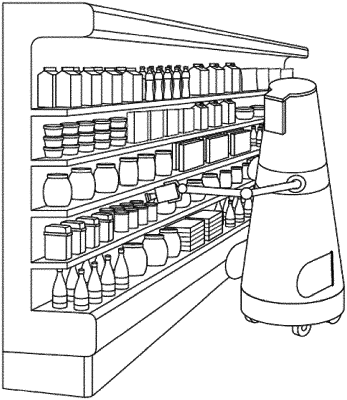| CPC B25J 9/1697 (2013.01) [B25J 9/1664 (2013.01)] | 16 Claims |

|
1. A mobile robot, comprising:
a motorized base configured to move the mobile robot throughout a floor of a retail environment;
a wireless transceiver configured to communicatively couple to an inventory system of the retail environment;
a robot body on the motorized base comprising:
a mechanical arm including a camera, the mechanical arm configured to contract and extend relative to the robot body; and
a controller configured to:
cause the motorized base to navigate within the retail environment;
capture images of inventory on display within the retail environment using the camera on the mechanical arm, wherein at least one image is captured in response to determining that inventory on display is obstructing a view of other inventory by extending the mechanical arm into a space above the inventory but below a shelf immediately above the inventory and capturing an image of inventory not visible from in front of the shelf;
select an inventory operation to perform based on the captured images wherein the selected inventory operation comprises a restocking operation in response to determining that a number of items of a product type currently on display is less than a threshold number of the items required to be on display;
in response to a sufficient number of items to restock the product type being available at the retail environment, causing the mobile robot to restock the product type; and
in response to a sufficient number of items to restock the product type not being available at the retail environment, autonomously ordering, by the mobile robot, additional items of the product type from a remote location for delivery to the retail environment.
|